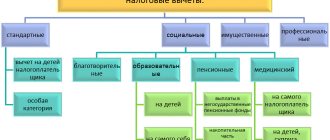Thousands of real estate transactions are carried out every day in the Russian Federation, and an extract from the Unified State Register of Real Estate on the contents of title documents allows participants to exchange information without using original papers. Today we will tell you what information is included in the statement, who can request the document, and how much it costs.
What is an extract from the Unified State Register of Real Estate on the contents of title documents?
It's no secret that any legally significant action is documented. Transactions the subject of which is real estate cannot be considered an exception; on the contrary, they require utmost attention to title documents.
Before the parties sign an agreement or the bank decides to issue a loan, the property owner will have to prove the existence of the appropriate rights. Of course, you can always have a whole bunch of papers with you, but it is much easier to get an extract from the Unified State Register of Real Estate, which is an extract from the title documents, and present it if necessary. Help may contain information about:
- Acts of justice that have entered into force of law;
- Decisions of municipalities regarding the privatization of living space;
- Alienation agreements (sale, donation, exchange, etc.);
- Other official documents that are the basis for the emergence of registration rights to the building.
It should be noted that an extract from the Unified State Register of Real Estate on the contents of title documents can not only confirm the legal purity of the transaction. If the original documents for housing are lost, she will be the one who will be able to prove the existence of ownership rights and speed up the process of restoring the documentation.
Is an extract from the Unified State Register a title document?
- name of the body registering rights to real estate;
- the property in respect of which the request was made (apartment/house, etc.), the exact address of the location of the property;
- purpose of real estate (residential, non-residential);
- cadastral number of the object;
- information about the legal owner - first name, last name, patronymic, passport details of everyone who has the right to this premises.
For example, one statement on the transfer of rights indicates the basis document, but the other does not. Moreover, both documents are for 2019. Look at the photo. Please note that in the second extract in the column “date, number and basis for state registration of transfer (termination) of rights” only the date is indicated and the state registration number from the above column of the same name is repeated. Thus, we can only find out the date of the foundation document, but not the name of this foundation document. It can be assumed that there are some other features that depend on the region. Because the first extract was taken from Novosibirsk, and the second from Khabarovsk. Here are two more examples for 2021, where the basis document is indicated. Thus, we conclude that the basis document can be found out from the extract on the transfer of rights. But for some reason not always. We believe that this is not correct.
Who can order an extract from the Unified State Register of Real Estate
Before sending a request for an extract from the Unified State Register, the applicant must take into account the fact that the information indicated in the document is confidential. For this reason, the circle of persons entitled to request it from Rosreestr is strictly limited. The recipient of the statement may be:
- Owner of the object;
- Representative of the copyright holder (if there is a power of attorney registered by a notary);
- A credit institution that is a pledge holder (only in relation to pledged property);
- Management staff of the MFC (within competencies);
- FSSP employees;
- Law enforcement agencies;
- Courts;
- Representatives of authorities;
- Applicants for inheritance;
- Manager, in the process of bankruptcy implementation;
- Employees of notary offices.
Studying the presented list allows us to note that an ordinary citizen who does not have registration rights or powers will not be able to order an extract from the Unified State Register of Real Estate on the contents of title documents. The degree of his interest in the acquisition or other actions relating to the object in question does not matter.
For your convenience, we have also published a sample extract from the Unified State Register of Real Estate on the contents of title documents, which can be viewed by anyone. If you find out in advance what a particular document should look like, this will help you avoid deception and serious troubles in the future.
Title documents for land plots
The next important piece of paper is the court order. If disputes arise over who owns what share of property, you can turn to a judicial authority for help. After studying the presented materials, the court will make one decision or another. It will serve as the main document basis for the emergence of property rights. With its help, further registration will be carried out with the issuance of an extract from the Unified State Register.
Read more: Application for offset of payments to the tax office
Today we will be interested in title documents for land plots. What kind of papers are these? Where can I get them? What are they needed for? How can one recognize ownership of any real estate? It is precisely these points that we will have to deal with further. In fact, this topic is extremely important. Especially among those who are at risk of losing their property or dividing it. You often have to prove your rights to property.
What information is contained in the extract from the Unified State Register of Real Estate?
Studying the certificate from Rosreestr will allow you to obtain detailed information about the object. Shown here:
- The name of the authority acting as the registrar;
- Name of the property and its address;
- Purpose of property;
- Cadastral data;
- Detailed information about the owners and type of rights;
- Registration data;
- Contents of title documents, indicating the grounds for transfer of rights, dates of transactions and other information;
- Information about the person or organization acting as the applicant;
- Information about the specialist who issued the extract from the Unified State Register of Real Estate.
Depending on the nature of the information of interest to the applicant, an extract from the USRN on the contents of title documents may include data from a specific certificate or agreement, or reflect information about all transactions made with the specified object. If necessary, the applicant has the right to request information about a certain clause of the contract, even if it is of secondary importance.
Where are the supporting documents indicated in the extract?
The extract must contain, in addition to information about the property, its copyright holder, a link to the documents that became the basis for the transfer or termination of ownership of the property.
According to the order of the Ministry of Economy dated June 26, 2017 No. 378, a new form of USRN extract has been developed; it is valid in 2021. According to which the title documents must be registered in the column “Grounds for state registration”, the location of the links depends on the type of extract:
- The list of documents is reflected in “Information on registered rights” (section No. 2), paragraph No. 3 “Base documents” - in the Extract on the main characteristics and registered rights to the property.
- In the extract on the transfer of rights, the basis documents are indicated in the “Registered” paragraph (item No. 2).
- In the form on an individual’s rights to real estate, the data is indicated in the paragraph “Bases for state registration” (clause No. 1.2).
There are cases when the customer does not indicate in the application what information he requires. In this case, the certificate will reflect the documents that became title-establishing documents during the last registration of the right to transfer ownership. The extract provides a link to the document, but does not explain its contents and conditions.
The following information is displayed:
- document's name;
- number and series;
- name of the authority that issued the document;
- date of signature or issue;
- if the transaction was subject to state registration, then there must be a reference to its number and date;
- when notarized, a reference to a notary is indicated;
- The parties to the agreement must be indicated if there is a reference to it in the extract.
When the customer indicates a specific document in the application, only the necessary information will be reflected in the statement. For example, when referring to a contract, its essential terms are reflected, including the information available in the document.
The mandatory availability of all documents that form the basis of the transaction becomes necessary when the applicant receives a request to obtain information about the documents that were the basis for the transfer of ownership.
If there is a lot of information and documents on the property, the extract is drawn up on several sheets, stapled, numbered and certified with the seal of the registering authority and the signature of an authorized person.
How much does an extract from the Unified State Register cost?
The cost of the service directly depends on the legal status of the applicant and the form of the finished document:
- An electronic extract from the Unified State Register will cost ordinary citizens 400 rubles, and a company – 2 times more expensive;
- To obtain a paper certificate, a Russian will have to pay 600 rubles to the budget, and 1,700 rubles to the company.
There are often situations when an applicant prefers a paper version, mistakenly believing that the digital analogue will not have legal significance when submitted to various authorities. Fortunately, such fears are unfounded, since the electronic extract from the Unified State Register is certified by a qualified enhanced digital signature, so it can be used for any purpose.
What is the title document for a land plot and their list
Title papers are issued without a time limit . Accordingly, their legal force is not lost over time. Information is updated by replacing cadastral passports of land plots, extracts from cadastral records, etc. Some acts were issued to citizens during the Soviet period, but they are still relevant today.
It is provided to citizens after a property transaction or another option for registering ownership , in the form of a certificate issued by Rosreestr. Filled out according to the form established in the region at the location of the storage facility. Issued at the request of the copyright holder upon presentation of a title document. Information about it is entered into the certificate.
How to order an extract from the Unified State Register of Real Estate on the contents of title documents
Persons wishing to request information from the Unified State Register of Real Estate will be pleased to know that today there are several ways to achieve this goal. Those who prefer to contact authorized authorities on their own are recommended to pay a visit to Rosreestr, or get an appointment with an MFC specialist.
In the first case, the preparation of the extract will take no more than 3 days. As for receiving, due to the need to send documentation, the waiting period for readiness may increase by 2-4 days.
Those who want to order a certificate, saving effort and precious time, are recommended to submit a request through the website. Filling out the application takes no more than 15 minutes, and you can receive a completed extract from the Unified State Register within an hour. Using the site's capabilities does not require mandatory registration or personal identification procedures.
Features during alienation
Some of the documents of title to real estate must be notarized. These include copies of personal passports, if we are talking about co-ownership, copies of certificates of ownership, etc. Despite the fact that the purchase and sale agreement is not required by law to be notarized, it will never be superfluous. The signature and seal of a notary serves as an additional guarantee against illegal claims from outside and accusations of the owner that he received the object illegally.
When it comes to the alienation of real estate that is just being transferred or has become the property of a new owner, it is also necessary to obtain an extract from the management company about the status of personal accounts in order to find out if there are any debts for utilities. It won’t be superfluous to take it and attach it to the general package of papers. It will serve as confirmation that the property does not have any additional persons having the right to use it. This is especially important when it comes to housing.
An additional guarantee confirming ownership rights is an extract from the Unified State Register of Real Estate. It is worth keeping in mind that it can be ordered by strangers who decide to check who actually owns the object.









